There are countries we pass through… and others that pass through us.
Hungary belongs to the latter — a place that leaves a lasting imprint, blending mystery, tradition and quiet elegance for those who take the time to explore it.
The journey often begins in Budapest, somewhere between the steam of a thermal bath and the sound of a gypsy violin.
But for wine lovers, it quickly moves beyond the baroque façades: onto mineral roads winding between volcanic hills, fertile plains and vineyards shaped by centuries.
Because Hungary is far more than paprika and goulash…
It is also one of the oldest wine regions in Europe, the heir to a millennia-old viticultural heritage of exceptional depth.
Rare native varieties, unique volcanic soils and a winemaking style that blends tradition with boldness make Hungarian wines a true hidden gem, still largely overlooked by many enthusiasts.In this article, we explore the country’s iconic regions, signature grape varieties and key wine styles, and uncover why Hungary is a place where wine tells the story of both the land… and the soul.
1. Historical overview: a millennia-old wine region in full renaissance
The history of Hungarian wine is one of ancient heritage, marked by breaks, rebirths and transmission across centuries.
From the volcanic hills of Tokaj to the fertile plains of the Great Puszta, vines have grown here for more than two thousand years.
Ancient roots
Introduced during the Roman era, viticulture became firmly established along the banks of the Danube and Lake Balaton.
Soldiers and settlers brought early pruning and winemaking techniques, gradually transforming the hillsides into a structured wine landscape.
Medieval ascent
In the Middle Ages, the Church played a central role in spreading viticultural knowledge.
Benedictine and Cistercian monks refined pruning, fermentation and cellar practices while expanding the wine trade.
Hungarian wines began gaining recognition, especially those from Tokaj, which were already exported to the courts of Central Europe.
The golden age of the Austro-Hungarian Empire
From the 18th to the 19th century, Hungary experienced a true viticultural golden age.
Tokaj wines were served in Versailles and Saint Petersburg. Louis XIV famously declared:
“Vinum regum, rex vinorum” — the wine of kings, the king of wines.”
This period saw the emergence of rigorous vineyard organisation, early forms of appellations and unprecedented international prestige.
Decline under the Soviet era
The 20th century marked a dramatic turning point.
After World War II, land nationalisation and the mass-production logic imposed by the Soviet regime led to a collapse in quality.
Large estates were collectivised, artisanal work was replaced by industrial yields, and wine became a standardized product disconnected from its terroirs.
The renaissance since the 1990s
The fall of the Iron Curtain opened a new chapter.
The 1990s saw the arrival of foreign investors, a revival of native grape varieties and the creation of small family estates focused on quality.
The movement accelerated in the 21st century with modernized cellars, a return to sustainable practices and renewed international recognition, particularly for regions like Tokaj, Eger and Villány.
Today, Hungary embodies a remarkable wine renaissance:
a bridge between ancestral tradition and contemporary creativity.
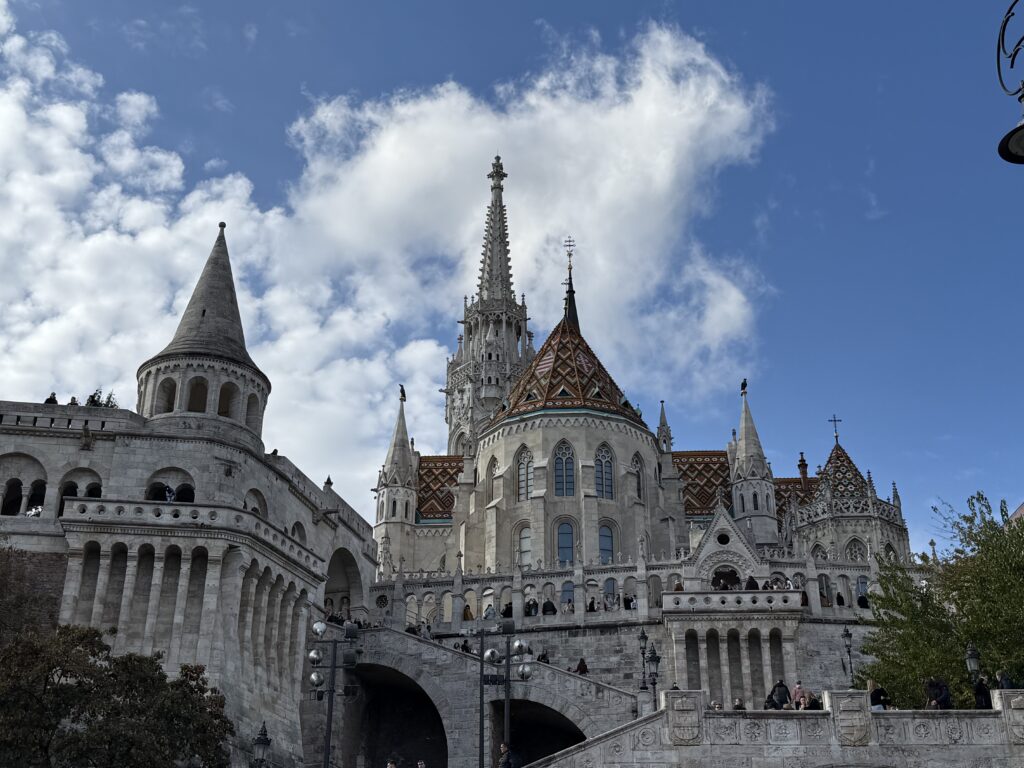

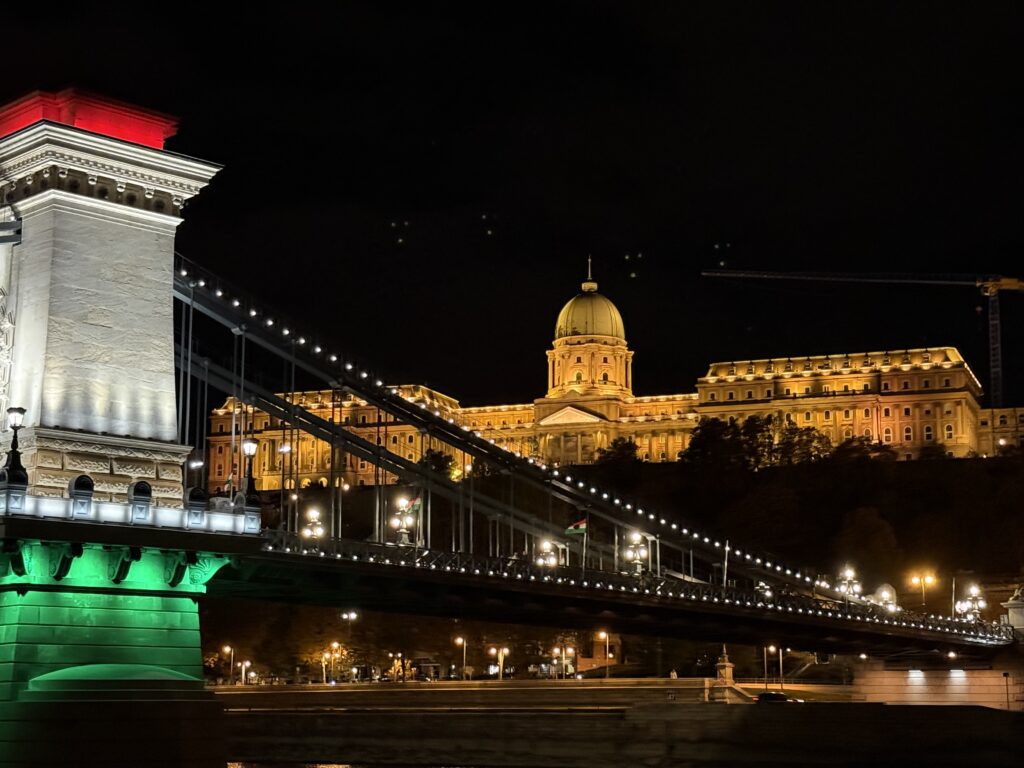
2. Terroirs & climate: welcome to volcanic land
To speak about Hungarian wines is first to speak about their land: a mosaic of landscapes, climates and soils that shape wines with a rare and unmistakable identity.
A continental climate with strong character
Located in the heart of Central Europe, Hungary experiences a distinctly continental climate:
hot, sunny summers that allow grapes to reach full maturity, and cold winters that ensure proper vine dormancy and natural sanitary balance.
These sharp temperature contrasts give birth to wines with high acidity and impressive aromatic maturity: a hallmark of Hungarian viticulture.
Landscapes carved for wine
Hungary stands out for its remarkably diverse topography:
- volcanic hills in the northeast (notably Tokaj and Somló),
- limestone plateaus around Eger,
- lake-influenced microclimates near Balaton and western Pannonia.
These geological differences create as many microclimates as wine styles:
from tense, saline whites to spicy, structured reds, all the way to sweet wines of almost crystalline precision.
The beneficial role of Lake Balaton
Lake Balaton (known as Hungary’s “holiday lake”) is far more than a summer destination.
It acts as a true climate regulator for the surrounding vineyards.
Its gentle breezes and light-reflecting surface encourage even ripening while preserving freshness.
The result? Balanced wines often marked by a delicate minerality.
A viticultural identity: precision and emotion
Hungarian wines typically combine:
- vibrant acidity,
- aromatic maturity,
- and mineral tension drawn from volcanic soils.
It is an expression of straightforward, structured, precise winemaking… but always with a generous heart.
Each bottle seems to carry the same paradox:
the rigor of the climate, and the warmth of the Hungarian spirit.

3. Key grape varieties: the ones that will change your wine vocabulary
Hungarian wines are unlike any others, and it all begins with their native grape varieties.
Here, you won’t find standardized Chardonnay or Cabernet.
Instead, you’ll encounter names that may be unpronounceable at first… but unforgettable after the first sip.
White grape varieties
Furmint
Profile: high acidity, taut structure, citrus, green apple, flint.
Pro note: The undisputed star.
If Hungary were a fashion house, Furmint would be its signature piece: precise, distinctive, and timeless.
The emblematic grape of Tokaj, it produces both laser-cut dry whites and the famous Tokaji Aszú sweet wines.
Hárslevelű
Profile: floral, honeyed, delicately spicy.
Pro note: Think Furmint… but warmer and more sensual.
Often blended with it, Hárslevelű brings roundness and charm to Hungarian whites.
Olaszrizling (Welschriesling)
Profile: almond, yellow apple, dried herbs, subtle noble bitterness.
Pro note: Not to be confused with German Riesling — truly not the same grape.
Versatile and expressive, it forms the backbone of many Balaton and Transdanubian whites: straight, saline and effortlessly drinkable.
Irsai Olivér
Profile: muscat-like, floral, vibrant, with aromas of fresh grapes, lychee and white flowers.
Pro note: The ultimate feel-good grape: expressive, joyful, slightly showy: the kind of wine everyone enjoys at apéritif hour.
Created in 1930, it embodies the modern, open-minded face of Hungary’s new wine scene.
Red grape varieties
Kékfrankos (Blaufränkisch)
Profile: black cherry, pepper, herbs, fresh tannins, marked acidity.
Pro note: The “Balkan Pinot Noir”: elegant, energetic, sometimes unpredictable, but always sincere.
It is the country’s most planted red grape and the backbone of blends in Sopron, Eger and Szekszárd.
Kadarka
Profile: light, spicy, delicately fruity, with notes of wild strawberry and sweet paprika.
Pro note: A red that whispers rather than shouts.
Its airy, slightly earthy character makes it a wine of emotion rather than demonstration.
Hungarian grape varieties have a unique charm:
they don’t aim to please, they aim to express.
They tell the story of a terroir, a culture, and a philosophy of wine where identity matters more than conformity.
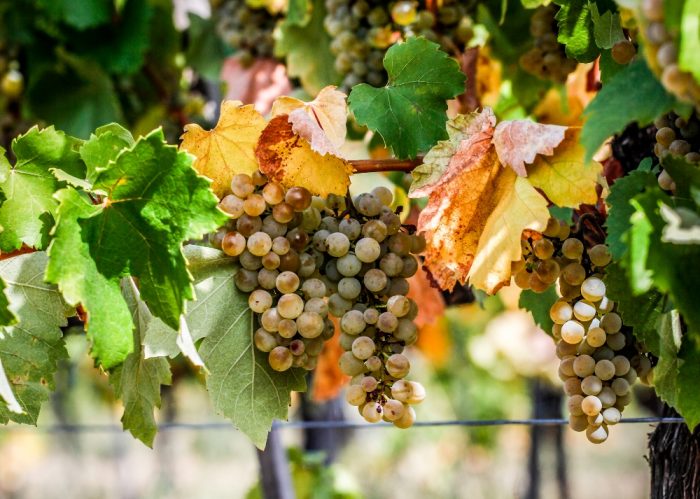
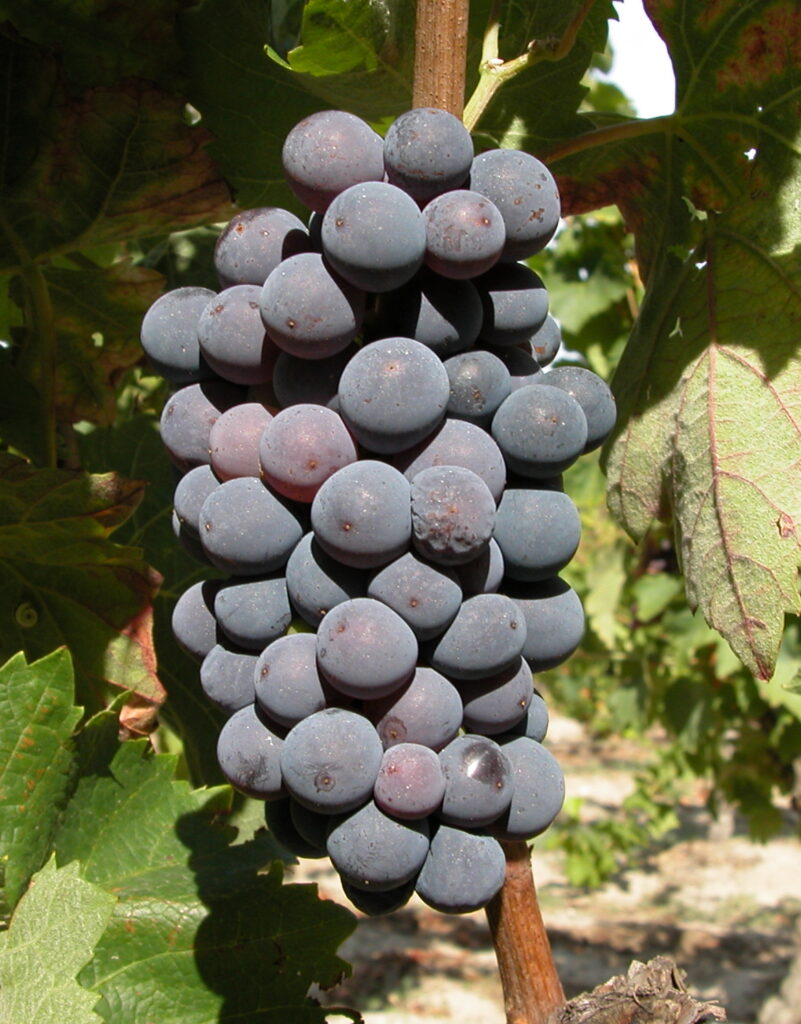
4. Key Hungarian wine regions
Hungary is a patchwork of terroirs, microclimates and viticultural traditions.
Four regions dominate the contemporary scene, each with its own accent, temperament and personal definition of the word balance.
Tokaj: Myth and Modernity
Style: taut dry whites & legendary sweet wines
Key idea: Volcanic soil + botrytis = magic
In the northeast of the country, this is where the word “Hungary” takes on its full meaning for wine lovers.
Tokaj, a UNESCO World Heritage site, is rooted in volcanic soils and shaped by a unique microclimate that favours noble rot (Botrytis cinerea).
The result?
The iconic Tokaji Aszú sweet wines, renowned for their extraordinary complexity, as well as a new generation of precisely chiseled dry whites made from Furmint.
Tokaj is where geological rigor meets liquid poetry.
Eger: Elegance and Structure
Style: elegant reds, complex blends
Key idea: Bikavér, the Hungarian “Bull’s Blood”
In northern Hungary, Eger crafts a more temperate style.
Its emblematic wine, Bikavér (Bull’s Blood), blends several red varieties (notably Kékfrankos) to create structured, deep, yet always elegant wines.
The whites, often made from Leányka or Hárslevelű, also surprise with their freshness and tension.
Eger is reason and measure: a region that builds its wines the way an architect draws a blueprint, with balance and intelligence.
Somló: Mineral Majesty
Style: saline, powerful, linear whites
Key idea: Mini volcano, maxi personality
Somló is an isolated volcanic cone in western Hungary, a terroir as tiny as it is emblematic.
Its wines, particularly from Furmint, Hárslevelű and Juhfark, are deep, tense and almost vibrating with energy.
Some compare them to Chablis on lava, others see them as meditative whites.
Either way, Somló proves that a small terroir can express enormous power.
Villány: The Quiet Strength of the South
Style: powerful, velvety reds
Key idea: Hungary’s “muscular right bank”
Welcome to the south — the paradise of Cabernet Franc.
Villány produces dense, sun-soaked, generous wines often compared to Bordeaux right-bank reds, but with an unmistakably Hungarian soul.
Merlot, Kékfrankos and Syrah join Cabernet Franc in cuvées of unmistakable character. From mystical Tokaj to sensual Villány, Hungary’s wine regions form a human-scale map where every valley, hill and volcano tells a different nuance of the same word: identity.

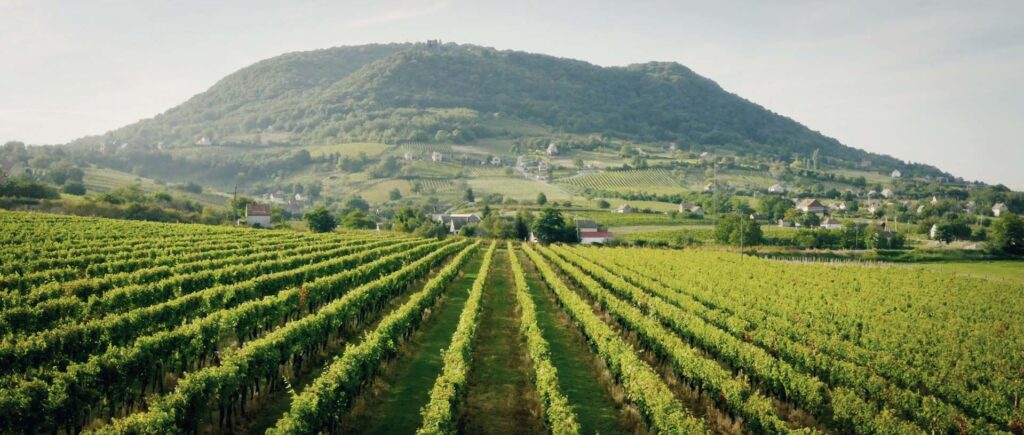

5. Tokaji Aszú: “Liquid Gold” explained clearly (and quickly)
Tokaji Aszú is one of those wines whose very name sends a shiver down the spine of seasoned wine lovers.
A mythical wine, born from patience, botrytis, and a winemaking tradition that has remained unchanged for centuries.
The Magic of Botrytis
The secret of Tokaji Aszú lies in noble rot (Botrytis cinerea), the fungus that naturally dehydrates the grapes while concentrating their sugars, acids and aromas.
The result?
Golden, shrivelled berries bursting with pure essence.
These aszú berries are harvested one by one, literally berry by berry, entirely by hand.
An immense task, worthy of a goldsmith.
A Winemaking Method Unlike Any Other
The Aszú berries are then macerated in wine or unfermented must for several hours to several days.
This slow infusion extracts the purest essence of the fruit, giving the wine its silky texture and incomparable depth.
The intensity of the wine is measured by the number of puttonyos, an historic system indicating how many units of Aszú berries were added.
The higher the number, the richer, sweeter and more contemplative the final wine.
Aromatic Profile
A great Tokaji Aszú is a masterclass in balance:
- candied apricot, acacia honey, orange zest
- black tea, saffron, oriental spices
- and a laser-like acidity that holds everything perfectly in tension
Despite its richness, Aszú is never heavy: the exact opposite of traditional Hungarian cuisine after three layers of paprika.
Spotlight on Demeter Zoltán: A Contemporary Master of Tokaj
Among the emblematic winemakers leading Hungary’s renaissance, Demeter Zoltán holds a special place.
Trained in Hungary, France and the UK (where he earned the prestigious WSET Diploma), he founded his estate in 1996 in Tokaj.
On just 7 hectares of family-owned vineyards, he produces:
- fine, saline sparkling wines
- precise, terroir-driven dry whites
- subtle Tokaj Szamorodni
- and, of course, Aszú wines of exemplary purity
His philosophy is simple: return to the essence of the terroir and let the soil speak with as little intervention as possible.
The result: wines of crystalline clarity, where complexity arises from precision rather than power.
The Liquid Gold of Central Europe
Tasting a Tokaji Aszú is a journey back in time.
It is understanding why Louis XIV called it “the wine of kings and the king of wines.”
And it is rediscovering Hungary for what it has always been:
not a forgotten land, but a discreet treasure, rewarding those who know how to look.
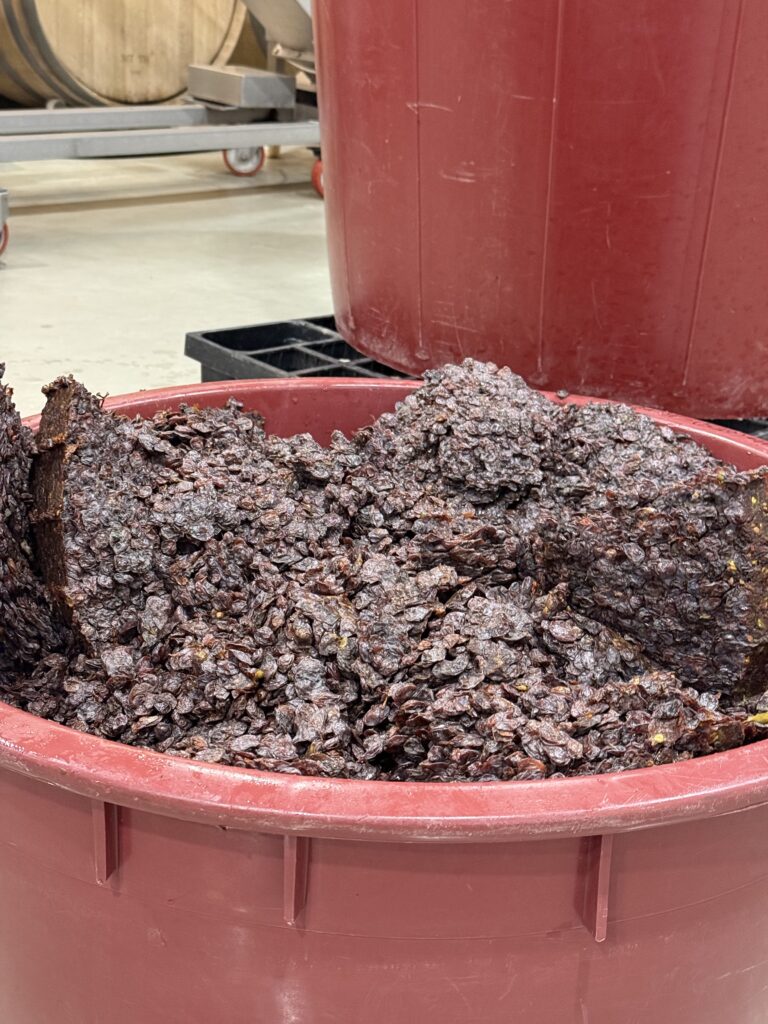
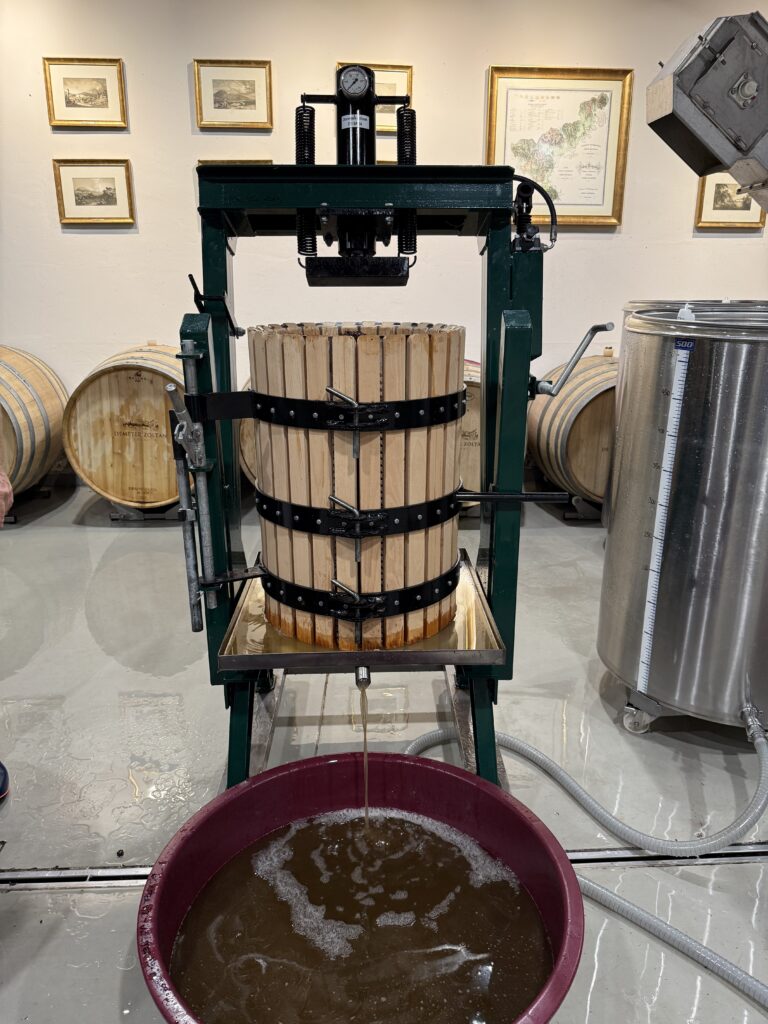

6. Hungarian wine styles: a palette worth rediscovering
Hungary is a true open-air oenological laboratory.
Its volcanic soils, continental climate and diversity of native grape varieties allow for an impressive range of wine styles — from mineral-driven whites to structured reds, legendary sweet wines and increasingly promising sparkling wines.
Dry White
Example: Furmint
Profile: intense, structured, taut, mineral
Dry Furmint represents the new face of Hungarian wine: precise, elegant and often partly aged in oak.
These wines express the volcanic minerality of Tokaj or Somló with crystalline clarity.
A style to watch closely — it already rivals the great whites of Central Europe.
Sweet Wine
Example: Tokaji Aszú
Profile: golden sweetness, razor-sharp acidity, infinite depth
The ultimate emotional wine.
A perfect balance of sweetness and tension, where every sip reflects the patience of hand-harvesting berry by berry.
A timeless classic of the world’s wine heritage.
Fresh Red
Example: Kékfrankos (Blaufränkisch)
Profile: pure fruit, crunchy cherry, vibrancy
Kékfrankos is the symbolic red of modern Hungary: energetic, vibrant, somewhere between Pinot Noir and Gamay.
Perfect for wine lovers seeking digestible, refreshing reds, ideally served slightly chilled.
Structured Red
Example: Villány (Cabernet Franc, Merlot, Syrah)
Profile: powerful, full-bodied, tannic, sun-drenched
In the south, the wines gain density.
Villány, often nicknamed Hungary’s “right bank,” produces rich, velvety reds led by Cabernet Franc.
This is Hungary in large format, but always with elegance.
Sparkling Wines
Example: Various regions (Tokaj, Etyek, Balaton)
Profile: fine, lively, increasingly precise
Hungary’s sparkling wine production has seen remarkable growth.
With the cool climate of Etyek and the volcanic soils of the north, these wines gain purity and definition.
The style is sharpening, techniques are advancing — Hungary is quietly establishing itself among the serious sparkling-wine regions.
Pro Tip: Dry Furmint is now the modern ambassador of the country.
It embodies a new generation of winemakers — internationally trained, focused on precision, and determined to place Hungary back on the map of Europe’s great white wines.
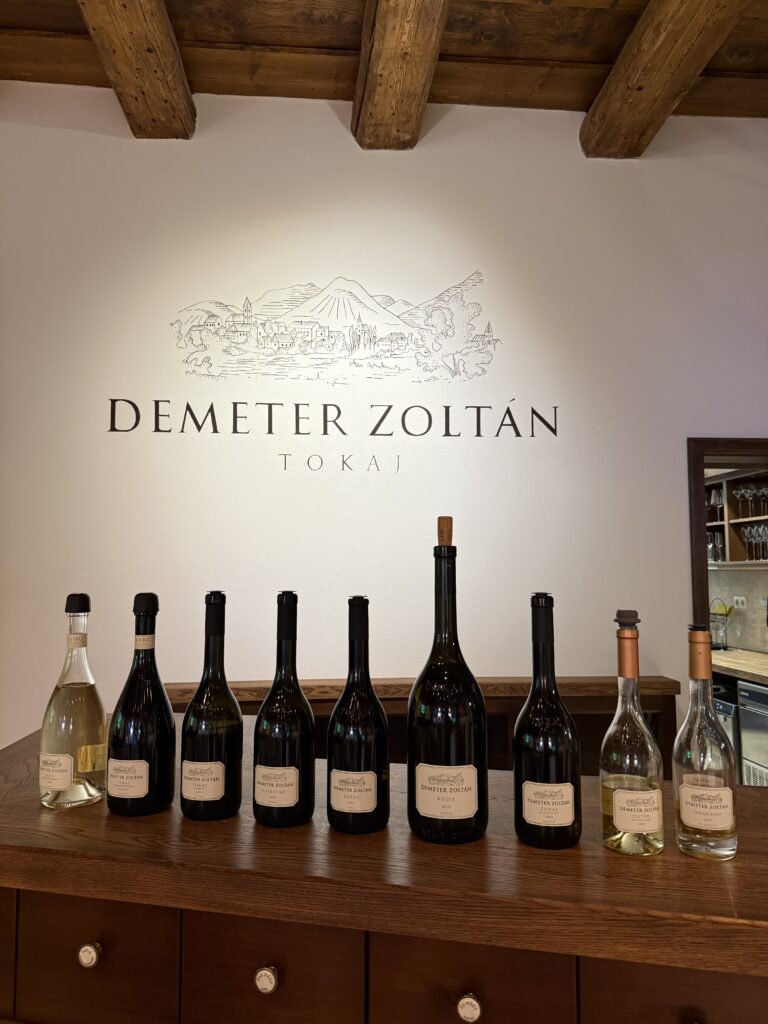
7. Hungarian food & wine pairings: a symphony of balance
Hungarian wines have a major advantage that many regions envy: naturally high acidity.
It is what makes them so versatile at the table.
From grilled fish to spiced dishes, from duck breast to dessert, each style finds its place with elegance, often with a touch of boldness.
Dry Furmint
Pairing: grilled fish, aged cheeses
Why it works: acidity + tension = perfect balance
Dry Furmint is universally convincing.
Its minerality and vibrancy make it the ideal partner for grilled fish, shellfish or strong cheeses.
A pure, linear wine that enhances delicate iodized flavours without overwhelming them.
Hárslevelű
Pairing: mild Asian cuisine, coconut-based dishes
Why it works: floral notes + spices = subtle harmony
This grape charms with its delicate aromatics and gentle spiciness.
With lightly sweet or mildly spicy dishes, it brings freshness and elegance without clashing with the flavours.
Think Thai curry, stir-fried prawns or spring rolls — the connection is immediate.
Kékfrankos
Pairing: duck breast, lamb tagine, herb-roasted meats
Why it works: fruit + freshness = lift and balance
With its supple tannins and expressive fruit, Kékfrankos pairs beautifully with juicy red meats as well as slow-cooked dishes.
It supports intense flavours while keeping a refreshing grace, almost Burgundian in spirit.
Tokaji Aszú
Pairing: foie gras, blue cheeses, spiced desserts
Why it works: sugar + acidity = perfection
Tokaji Aszú is not just a dessert wine, it is a wine of emotion.
Its balance of sweetness and tension makes it sublime with foie gras, blue cheeses, or desserts featuring yellow fruits and gentle spices.
For a touch of virtuosity:
Tokaji Aszú + apricot–rosemary tart = guaranteed applause.
Hungarian pairings remind us of a simple truth:
when the wine is balanced, the table becomes a place of expression.
These combinations are not rules, but dialogues (between acidity and sweetness, minerality and spice, heritage and modernity).
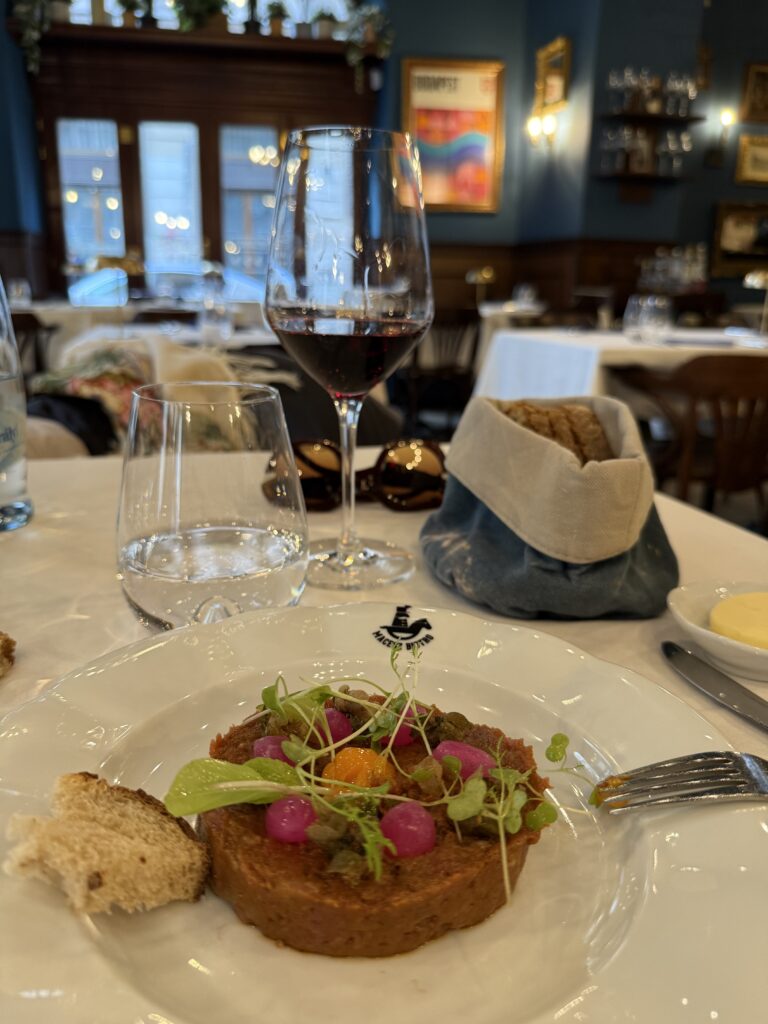
8. Where to drink wine in Budapest: the must-visit address
If Hungary is a viticultural treasure, Budapest is its most inspiring gateway.
Between vaulted cellars, design-focused wine bars and terraces overlooking the Danube, the capital offers a wine scene in full effervescence.
Among the essential addresses, Parlé Budapest stands out as a must-visit for anyone interested in Central European wines.
Parlé Budapest: The Elegance of Borderless Wine
Founded by Kristóf, a sommelier certified with the WSET Diploma, Parlé Wine Bar is a place like no other:
a crossroads between wine cultures and a space for living, breathing pedagogy.
Its philosophy?
Showcase the great wines of Central Europe — Hungary, Romania and Serbia — in an atmosphere that is warm, inviting and rigorously curated.
Here, every glass tells a story:
the story of an often-overlooked terroir, a passionate winemaker, or a region undergoing a renaissance.
An Eclectic and Curious Wine List
Kristóf builds his selection as a journey through taste.
A few unmissable bottles:
- BACS Méthode Traditionnelle – a sparkling wine of unexpected finesse and delicate bubbles
- Skin-contact Irsai Olivér – floral and citrusy, expressive yet refined
- Kadarka – a delicate red, between Pinot Noir and Gamay, perfect for discovering the freshness of Hungary
- Bikavér (Bull’s Blood) – an emblematic, structured and aromatic blend reflecting the heritage of Eger
- Sauska Cabernet Franc – a deep, velvety red from southern Hungary, ideal for Villány lovers
The Parlé Experience: Taste, Understand, Travel
At Parlé, you don’t simply drink.
You taste to learn, and you share to understand.
Guided tastings are designed as true sensory journeys, blending culture, pedagogy and pleasure — very much in the spirit of the WSET approach.
It is a place where Central European wines stop being “niche” and instead become wines of character, shaped by precision and passion.
If you don’t know where to start your exploration of Hungarian wine, start with Parlé.
It is, in many ways, the perfect classroom before Tokaj: a wine bar that combines taste, education and soul.

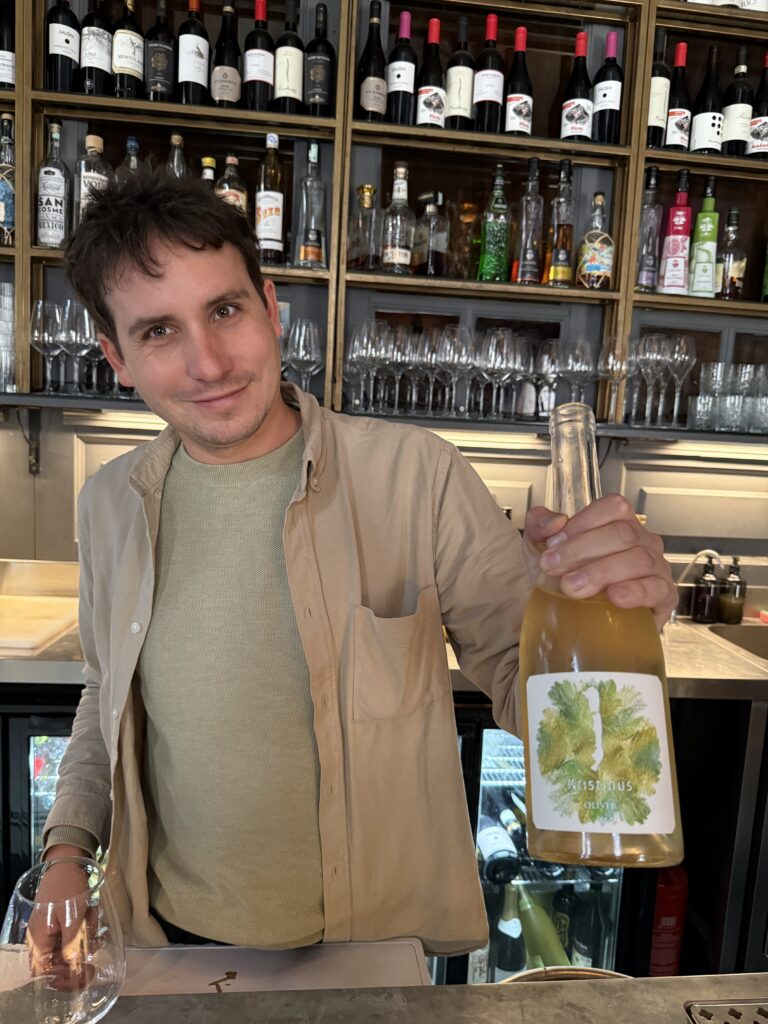
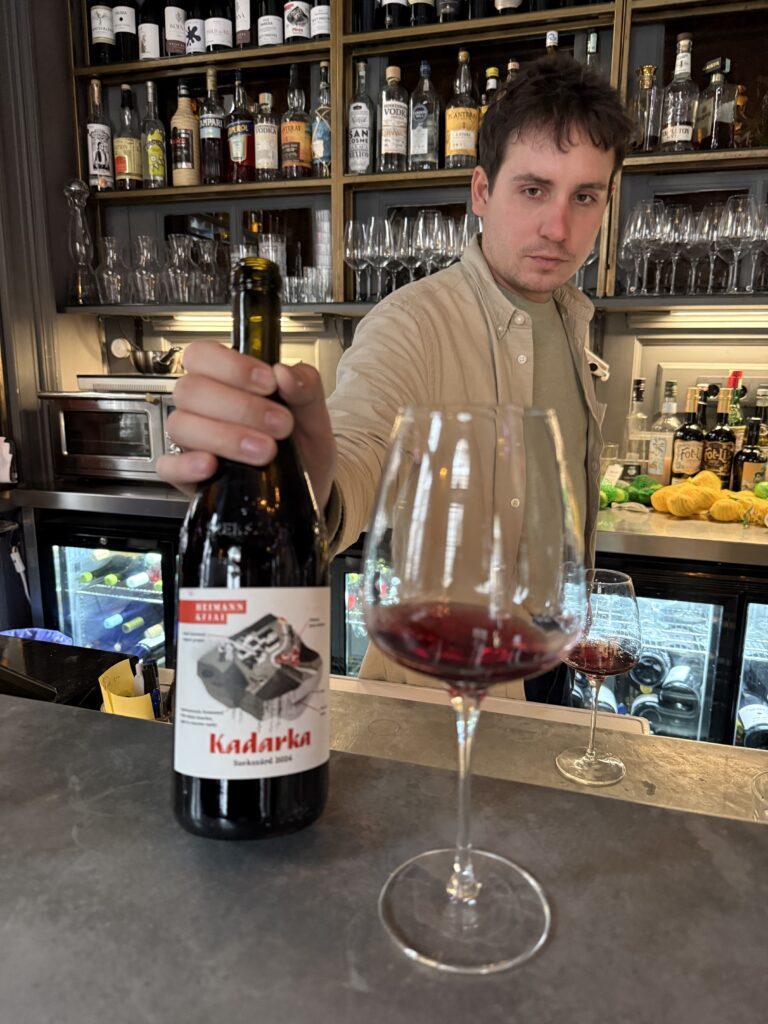


Hungary: a wine region to (re)discover before everyone else
Hungary is anything but a well-kept secret.
It is a country that has transformed its history, its geology and its passion into a true canvas for viticultural expression.
It is:
- wines with identity: sincere, unmasked, unapologetically themselves,
- a remarkable price-to-quality ratio (still largely underestimated),
- grape varieties you will be proud to pronounce… once you’ve practiced,
- and an acidity level that would make any WSET Diploma educator smile.
But above all, Hungary is a vineyard where tradition meets ambitious modernity — a place where every bottle tells a story of renaissance, resilience and pride.
It is exactly the kind of region you want to discover before everyone else…
and speak about later with that knowing smile of those who were already in the loop.
Ready to go further?
Explore our Professional English for Wine courses (in Paris, Marseille or online),
eligible for CPF funding with CLOE or LTE certifications, and dive deep into the diversity of the world’s great vineyards — from Tokaj to Bordeaux, from Furmint to Chardonnay.






